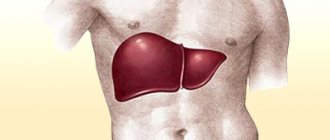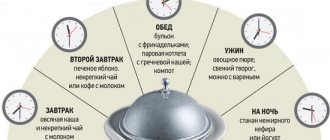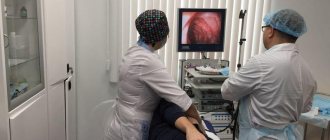Cough is a common symptom of various diseases, not just colds. Many people consider it a harmless manifestation and simply do not attach any importance. As a result, the disease becomes severe and the coughing reaches the point of vomiting. The condition can be debilitating to a person, making it difficult to tolerate the condition. Most often, independent attempts to eliminate an unpleasant symptom are unsuccessful and lead to serious complications.
Most often, the gag reflex occurs in childhood. This is explained by an underdeveloped diaphragm and fragile immunity. In most cases, vomiting indicates the neglect of the pathological process. A favorable outcome depends on timely identification of the cause of the disease and correctly selected treatment. What can cause a strong cough to the point of vomiting and what to do about it?
Causes in adults
The phenomenon can be caused by various pathologies that affect the respiratory and digestive organs, the immune system, etc. Unfortunately, it is impossible to make a diagnosis based on only one sign. A comprehensive examination of the patient is necessary.
Table 1. What causes a dry cough in an adult
| Bronchial asthma | It occurs due to the increased sensitivity of the immune system to a number of substances. It is an inflammatory process that affects the bronchi. Differs in chronic course |
| Whooping cough | An infectious disease that is rarely found in adult patients, but can be quite dangerous. Accompanied by blue discoloration of the skin, vomiting, etc. |
| Idiopathic pulmonary fibrosis | A chronic pathology that leads to the death of lung cells due to inflammation. Accompanied by shortness of breath, decreased performance, chest pain, etc. |
| ARVI | A group of viral diseases leading to inflammatory damage to the upper respiratory tract. Signs include nasal congestion, rhinorrhea, headache, weakness, fever, etc. |
| Gastroesophageal reflux disease | Diseases of a chronic course, expressed in recurrent reflux of gastric/duodenal contents into the esophagus. Accompanied by shortness of breath, sore throat, dyspeptic disorders |
| Dry pleurisy | Inflammation localized on the pleural layers. Occurs due to infection, mechanical damage, etc. Possible symptoms include: dry cough, pain when breathing, increased sweating, low-grade fever, etc. |
| Mycoses | Pathologies caused by infection with pathological fungi |
| Smoking, drinking alcohol | Negatively affects the health of the respiratory system |
These are not all the reasons leading to the manifestation of dry type symptoms. This may be due to abnormalities in the development of the respiratory system, unfavorable environmental conditions, neoplasms, etc.
Diseases of the heart and nervous system
One of the causes of a dry cough reflex in an adult is insufficient functioning of the heart.
Due to poor blood circulation, stagnation occurs in the lungs, the mucous membrane swells, and fluid from the blood vessels enters the respiratory organs and pulmonary alveoli. As a result, the nerve endings are irritated, which provokes coughing attacks, which are accompanied by vomiting.
A cardiac cough often appears at night or after physical activity.
In case of a hypertensive crisis or a heart attack, pulmonary edema may form, which requires immediate hospitalization. Stressful situations and anxiety are also sources of this disease.
Such reasons include:
- troubled home environment;
- anxiety before important speeches, exams;
- worries about relatives;
- aversion to the matter, etc.
A nervous cough in an adult cannot be treated. The main factors for getting rid of it are creating a calm environment at home, reducing nervous and physical stress.
Character and symptoms
It is possible to determine what exactly provokes this unconditioned reflex, including by assessing the nature of the symptom.
Paroxysmal
A similar manifestation accompanies bronchial asthma. A dry paroxysmal cough in an adult suffering from this pathology is detected when interacting with an allergen. It is accompanied by the appearance of pronounced wheezing, difficulty breathing during exhalation, headache, etc. A similar manifestation is also typical when allergies occur.
A paroxysmal dry cough in an adult accompanies whooping cough, and may also indicate heart pathology. For example, about arrhythmia, myocardial infarction, heart failure, etc.
Strong
As a rule, an intense symptom accompanies acute bronchitis. A severe dry cough is one of the main signs of this disease, which is an inflammatory process localized in the bronchi.
Acute bronchitis is the most common reason for visiting a doctor associated with damage to the respiratory system.
Until vomiting
This combination is a serious reason to seek help. A dry paroxysmal cough in an adult, leading to vomiting, may be a symptom of heart disease, rotavirus, or whooping cough. Often these signs indicate pathologies of the gastrointestinal tract, infectious lesions, and advanced pneumonia.
Suffocating
Characteristic for patients with hypersensitivity of the body. Allergic dry suffocating cough mainly occurs in spring and autumn. This obsessive symptom is also characteristic of dry pleurisy, influenza and ARVI.
Doesn't clear throat
The absence of sputum for a long time may indicate pharyngitis, laryngitis or tracheitis. A dry cough in an adult, after which tracheobronchial secretions are not coughed up, is often a herald of gastrointestinal pathologies. For example, it occurs due to an ulcer.
In the morning
Intense manifestations in the morning are characteristic of acute bronchitis. The manifestation is detected with adenoiditis. In this case, a dry cough in the morning provokes mucus leakage. Experienced smokers often complain about this symptom.
At night
Occurs in patients with bronchial asthma, gastroesophageal reflux disease, and ulcers. A dry cough at night also occurs with oral chlamydia. This is an infectious lesion, accompanied by an unpleasant “fishy” odor from the mouth, the appearance of sticky mucus in the nasopharynx, spasms of the tongue, etc.
Parasitic diseases and allergies
A dry paroxysmal cough also appears when the body is infected with roundworms, toxocaras and other helminths.
Parasites affect not only the respiratory system, but also the intestines, bile ducts, and liver.
As a result, a patient with helminths experiences attacks of dry cough with vomiting, shortness of breath, and weakened immunity. Contact with allergens provokes a spasm, because of this the mucous membrane becomes irritable. In addition, the disease is accompanied by a runny nose and watery eyes.
Also, a dry, frequent cough is caused by an allergic reaction to any external irritants in the air, for example, pollen from plants, flowers, or ordinary dust. The following are generally at risk for allergic cough:
- people who are prone to allergic reactions of an acquired hereditary nature;
- patients with bronchial asthma src=»https://karpov-clinic.ru/uploads/posts/2018-04/1523600661_allergiya-astma.jpg» class=»aligncenter» width=»500″ height=»194″[/img]
Bronchial asthma is not only an allergic form, it also appears as a result of an advanced stage of bronchitis. People with this disease experience shortness of breath, frequent paroxysmal debilitating cough reflexes, and congested breathing. It is not possible to completely get rid of the pathology, but maintenance therapy with symptomatic medications helps relieve spasmodic attacks.
Why is it dangerous?
The symptom itself is a protective reflex and is intended to restore airway patency. However, in some cases it becomes painful. What is dangerous about a debilitating dry cough?
- sometimes provokes vomiting;
- leads to sleep disturbances;
- a dry cough in an adult can cause short-term respiratory arrest at night;
- causes suffocation;
- causes neuralgic pain, etc.
Some pathologies can lead to complications if not treated correctly. Thus, prolonged bronchitis can not only become chronic, but also become the first step towards the appearance of bronchial asthma.
Prevention
In order to avoid recurrence of such attacks, it is necessary to follow the prevention requirements:
- ventilation of the room without drafts. This will prevent the accumulation of pathogenic microorganisms;
- maintaining optimal temperature conditions. Remember, viruses multiply rapidly at temperatures above twenty-three degrees Celsius;
- humidify the indoor air. Dry air makes the mucous membrane of the respiratory tract more vulnerable to pathogens;
- drinking plenty of fluids. Natural water will promote the rapid removal of toxins and dilute mucus;
- avoid hypothermia;
- observe the rules of personal hygiene;
- stop smoking;
- dress according to the weather;
- Treat colds promptly.
So, coughing to the point of vomiting can occur in both an adult and a child. Sometimes this symptom appears for physiological reasons, but most often it is provoked by diseases of the respiratory system. Vomiting cough is a symptom of diseases such as whooping cough, bronchitis, pneumonia, ascariasis, and allergies. Treatment begins with examination and identification of the provoking factor.
Medicines and traditional medicine will help to cope with this unpleasant phenomenon. The condition can be alleviated by ventilating the room, drinking plenty of fluids, steam inhalation, and rubbing the chest. These measures can be taken before the doctor arrives. You should not self-medicate, especially for young children. With the help of a specialist’s recommendations, you can forget about the problem once and for all.
How to relieve and calm?
The consumption of warm alkaline drinks has a beneficial effect on the patient's condition. These include Narzan and Borjomi. Before you use them to relieve a dry cough, you should warm the liquids until they are warm. In a number of pathologies, it is possible to relieve pain in the chest, as well as reduce the manifestation of the symptom itself, using warming. Mustard plasters, camphor ointments or pepper plaster are suitable. How else can you calm a dry cough:
- using physiotherapy (inhalation, electrophoresis, etc.);
- aromatherapy, etc.
Colds
In an adult, cough is most often a symptom of ARVI, laryngitis, tracheitis and pharyngitis. At the beginning of these diseases, the infection multiplies in the nasal cavity, in the larynx, a runny nose and a dry cough appear, which develops into a continuous, sometimes barking (with laryngitis).
The infection also leads to general intoxication of the body, as a result of which the patient’s body temperature rises, headache, aching limbs, and hoarseness. At the end of the disease, a dry cough, with proper treatment, turns into a wet cough, and sputum begins to come out abundantly.
Types of inflammation that lead to coughing attacks:
- Laryngitis
is an inflammatory process of the mucous membrane of the larynx. The reasons for its appearance are infection in the body, hypothermia, dust, as well as overstrain of the larynx, which can lead to loss of voice. - Pharyngitis
- inflammation of the pharynx. Accompanied by symptoms such as dry throat, pain when swallowing, and a hacking cough. The source of the disease is staphylococcus and streptococcus. - Tracheitis
- inflammation of the trachea. Signs of this disease include pain in the chest, a strong ringing cough, general malaise, high fever, and sputum with purulent admixture. The cough reflex is more pronounced in the cold or in a dusty room. The patient experiences a spasm in the tracheal area, which can cause vomiting. - Bronchitis
- inflammation of the bronchi. The disease is characterized by the production of large amounts of sputum and a dull cough. Stagnation of mucus in the bronchi can provoke a cough with vomiting. Attacks most often occur in the morning. With bronchitis, the temperature may rise or remain normal. - Pneumonia
- pneumonia. It is a consequence of improperly treated bronchitis or can occur when an infection enters the body. Pneumonia begins with a mild, muffled cough. Further progressing, the disease can provoke the appearance of severe spasms. The gag reflex appears at the peak of the disease.
Non-infectious irritants, such as dust, odors, and gases, can also provoke dry cough attacks.
Treatment in adults
Pharmacological therapy directly depends on the cause of the symptom. A debilitating dry cough is treated comprehensively.
Table 2. Agents that can be used for therapy
| Antitussives | Suppresses the cough center. These include: Sinecode, Codelac Neo, Omnitus, etc. |
| Expectorants | Stimulates airway clearance |
| Immunomodulators | Stimulate the immune system, activate immune competent cells |
| Antiseptics | Suppresses reproduction and destroys microbes |
First aid
Dry cough should be treated depending on the cause that provoked it. Having discovered an illness, you should help the patient at home until visiting a doctor. For this it is recommended:
- Provide warm drinks and proper nutrition. Warm milk with honey is ideal in this case. But keep in mind that honey is an allergen for the patient if he suffers from allergic manifestations.
- Create a calm, stress-free environment for the patient.
- Eliminate various irritants in the room: odors, smoke, dust.
- Humidify the room and open the window for fresh air.
- Inhalations based on medicinal herbs are allowed. Linden, chamomile, calendula, thyme, etc. would be suitable.
- Use folk recipes. Make a compress of honey and vegetable oil, or rub the chest area with medical alcohol or camphor oil.
The above tips will help relieve the cough symptom for a while, but only comprehensive treatment will help to completely cure the disease. Be patient, as treatment of the disease takes more than a week, it all depends on the cause.
Inhalations
This type of physiotherapy allows you to deliver the drug directly to the respiratory system and accelerate the absorption of active substances.
Physiotherapy has both a local effect on the respiratory system and a general effect on the entire body. Inhalations are recommended for the treatment of dry cough in an adult or child, but are carried out only for patients without fever.
Contraindications also include:
- severe heart failure, cardiac arrhythmia;
- hemoptysis;
- bullous pulmonary emphysema, pneumothorax;
- hypersensitivity to the inhalation drug.
Other causes of the disease
In addition to the above reasons, there are other sources that provoke a dry cough with vomiting:
- Tuberculosis
. In the initial stages of its development, the patient does not cough much, but for a long time. When the disease passes into an acute form, a protracted cough without improvement is observed, sometimes with vomiting. Associated symptoms of the pathology include increased body temperature in the evening, increased sweating, and blood in the sputum. - Lungs' cancer
. Malignant formations provoke a dry, tearing cough, scratching in the throat, and difficulty breathing. Early diagnosis of cancer is 90% of the cure for the disease. - Endocrine system diseases
, namely nodular diffuse goiter. - Some gastrointestinal pathologies
. For example, if there is a crack in the trachea or a diverticulum of the esophagus, then a cough reflex may occur after eating food. - Foreign bodies
. A foreign object entering the respiratory system causes an unexpected dry cough. Choking and vomiting appear. Dental treatment, deep breathing, loss of consciousness and other factors may be the motive for the penetration of a foreign body.
Coughing attacks can lead to fainting, but this is not the most dangerous consequence. For whatever reasons this condition appears, you need to consult a doctor for treatment.
The child has
Often the manifestation is found in young patients. There are many reasons for this phenomenon in children.
No temperature
A typical manifestation of an allergic reaction. A dry cough without fever can also be a consequence of low humidity or dust in the air. The sudden onset of a symptom may indicate that a foreign body has entered the respiratory tract.
At night
In some pathologies, intense obsessive behavior can lead to sleep disturbances. This is found in acute bronchitis, tracheitis, and pleurisy. A dry cough at night in a child usually suggests the same reasons as the appearance of the reflex in an adult. Often the symptom signals inflammation of the nasopharyngeal tonsil (adenoids).
How to treat a child?
For therapy in young patients, expectorants and antitussives are used. Antihistamines, anti-inflammatory and antiseptic agents are recommended. In general, the choice of medications depends on the diagnosis.
Treatment
Experts say that in some cases it is better not to hold back phlegm when coughing. If its appearance is not associated with an infectious process or a disease of the digestive tract, then most often there is nothing to worry about. On the contrary, during the process of vomiting a large amount of sputum can be released.
During an attack, the following tips will help relieve the condition:
- Give the patient small portions of water;
- open the window slightly to allow fresh air to enter;
- humidify the air in the room using improvised methods. You can simply put a container of water;
- It is better to take a semi-sitting position. This will prevent clogging of the airways with mucous secretions;
- if there is no temperature, you can do steam inhalations;
- Invite the patient to do breathing exercises.
Medicines are prescribed by a doctor. It is difficult to take various tablets and syrups, as they can come back out with vomit. With a strong gag reflex, medications are prescribed for parenteral administration (intravenously or intramuscularly). Three main groups of drugs are used to treat cough:
- antitussives. Reduce the sensitivity of receptors, thereby suppressing the gag reflex;
- mucolytic. Liquefy mucus and facilitate its removal;
- expectorants. Stimulate coughing.
Non-traditional recipes are used as auxiliary aid. Let's consider the most effective means:
- rubbing the chest and back with badger or goat fat, honey. It's best to do this before bed. Be sure to wrap yourself in a warm scarf afterwards;
- Decoctions of medicinal herbs that have an expectorant and anti-inflammatory effect will help alleviate the condition: licorice root, wild rosemary, St. John's wort, chamomile, thyme, eucalyptus;
- black radish juice. Grate the product and then add a small amount of honey. The product should be infused for several hours, after which it is consumed three times a day, a teaspoon;
- lemon. The fruit contains ascorbic acid, which will help in the fight against the disease. Lemon should not be consumed in its pure form. It will irritate the mucous membrane of the throat. It is better to add it to tea;
- Mustard plasters and warm compresses ease the attack. To prepare a compress, you can use clay, medical alcohol and heated honey. Apply a compress to the chest or neck. Cellophane is placed on top of the warming products and finally wrapped with a woolen scarf;
- steam inhalations with sage, eucalyptus, fir extract;
- Populists recommend drinking more warm milk, tea, eating raspberry jam, honey, and propolis.
The patient must remain completely at rest. The room in which it is located must be ventilated and sufficiently humidified
How to treat children?
If a young child develops a vomiting cough, parents should ensure that he does not accidentally choke on the vomit. To do this, you need to sit him down and tilt his head forward. After an attack, the baby should be washed and given water to drink. Medications will help to cope with this unpleasant phenomenon.
When thick mucus accumulates, thinning and expectorant medications are prescribed. Usually they are necessary for bronchitis. Such drugs facilitate the evacuation of bronchial secretions. The following drugs are used in pediatric practice: ACC, Gerbion, Ambrobene, Lazolvan. Antitussives help stop coughing quickly. They can be prescribed for laryngitis, tonsillitis, pharyngitis.
In no case should such drugs be used for a wet cough accompanied by active sputum production. They are also not prescribed simultaneously with expectorant medications. Such actions will lead to a deterioration in health. As a result, liquefied mucus will accumulate in the respiratory tract, but it will not have the opportunity to escape.
Not only medications will help relieve an attack. You can get rid of it with the help of simple tips that are applicable in the treatment of even allergy sufferers and newborn children:
- A glass of warm milk will soothe and relax the mucous membrane of the throat. Let the child drink it in small sips;
- Honey has anti-inflammatory properties and softens the larynx. You need to give the child a spoonful of honey so that he slowly absorbs it;
- a small piece of butter will eliminate irritation. The product coats the irritated throat. Explain to your child that you need to hold the butter in your mouth, the product will gradually melt;
- Chamomile decoction has an antiseptic and anti-inflammatory effect. The remedy will help relieve an attack;
- Peppermint candies will help relieve a sore throat and freshen your breath.
The child should be taken to the attending physician to determine the cause of the illness. For viral infections, it is important to follow the correct regimen. It includes drinking plenty of fluids, bed rest, and regular airing of the room. Symptomatic therapy will help alleviate the course of the disease. Bacterial lesions require the use of antibiotics. Without them, even the strongest immune system will have difficulty coping.
Inhalation procedures are effective in treating cough. Alkaline solutions, as well as bronchodilators and antispasmodics, can be used as a basis.
How to treat a dry, severe cough that causes vomiting in adults
If there is a dry cough and there is no accumulation of sputum in the respiratory tract, the patient may be prescribed antitussive drugs. However, you need to understand that the cough itself plays an important role - it expels irritating agents from the respiratory tract, so such remedies are used to a limited extent. If the cough is dry because the sputum is too viscous and difficult to remove, then mucolytic and expectorant drugs are used to thin it and facilitate removal from the respiratory tract. Antitussive drugs are not used together with expectorants, as this can lead to stagnation of mucus in the respiratory tract and the development of severe complications.
Long-term smokers experience bouts of severe coughing in the morning, which can lead to vomiting. At the end of the attack, viscous sputum is released.
Depending on the cause of the disease, the patient may also be prescribed antiviral, antibacterial or antimycotic agents (depending on the type of infectious agent, if any), and antihistamines.
In addition to the main treatment, herbal medicine can be used. Thus, licorice root, plantain, chamomile, sage, thyme, eucalyptus, rose hips, St. John's wort, wild rosemary, and oregano have expectorant and anti-inflammatory effects.
The most effective procedures that help with cough include inhalations. They can be carried out in a medical facility or at home using an inhaler, or you can simply breathe steam over a container with a solution. Steam (hot) inhalations are especially popular due to their simplicity and accessibility, but they can only be done if the patient does not have an elevated body temperature.
For diseases of the lower respiratory tract, steam inhalations are ineffective; in this case, cold inhalations using a nebulizer will help (inhalations in a child are recommended to be carried out exclusively using a nebulizer). Such inhalations can be carried out even at elevated temperatures. The advantages of a nebulizer include the ability to use medications for inhalation that lose their effectiveness when heated. Cold inhalations eliminate the possibility of the patient getting a burn to the respiratory tract.
Depending on the disease, some medications, saline solution, soda solution, alkaline mineral water, salt solution, sea water, solutions based on medicinal herbs (decoctions or infusions), and essential oils are used as an inhalation solution. Inhalations with oils of eucalyptus, fir, peppermint, and sage are popular.
Antitussive drugs are not used together with expectorants, as this can lead to stagnation of mucus in the respiratory tract and the development of severe complications.
At home, you can breathe steam over a container of boiled potatoes, to which you can also add aromatic oils. All inhalations have contraindications that must be taken into account. For example, inhalations with essential oils are not used for allergies or susceptibility to it.
If during inhalation the patient experiences a persistent cough, dizziness, or deterioration in general condition, you should stop the procedure and consult a doctor.
If a severe cough is caused by bronchial asthma, medications are used in the form of inhalers or sprays.
Folk remedies include mustard plasters and warming compresses, which can be made from boiled potatoes, cottage cheese; honey cakes (honey, flour and vegetable oil mixed in equal proportions) are popular.
The patient's chest and back can be rubbed with honey and internal fat. It is advisable to carry out the procedure at night, after which it is recommended to wrap the patient in a warm blanket. Rubbing should not be done at elevated body temperature.
A patient with a severe cough is advised to drink plenty of warm fluids. You can drink tea with linden, viburnum, raspberries, ginger, and currants. It is recommended to include more vegetables and fruits in your diet. Popular recipes include warm milk with honey and butter. Breast milk helps well, which is recommended to drink 3-4 times a day. You can alleviate the condition by regularly ventilating and humidifying the air in the room where it is located. In some cases, with a strong cough with the urge to vomit, breathing exercises can help.
If the cough is dry because the sputum is too viscous and difficult to remove, then mucolytic and expectorant drugs are used to thin it and facilitate removal from the respiratory tract.
Survey
Diagnosis of the causes of a deep dry cough is usually carried out by a general practitioner or family doctor. According to indications, consultations with specialized specialists are prescribed. The primary examination is aimed at assessing the condition of the lower respiratory tract, which is most often affected by symptoms. The primary recommended examination methods are:
- X-ray studies
. Typically, fluorography or plain radiography of the lungs is performed as screening. X-ray diagnostics can detect inflammatory changes, malformations, signs of systemic processes, space-occupying formations in the mediastinum and chest. - Rapid diagnosis of tuberculosis
. It is prescribed for prolonged causeless cough, there is information about contacts with patients with tuberculosis infection, and the patient belongs to risk groups. A tuberculin test or molecular genetic test is indicated. - Serological studies
. Due to the absence or meager volume of expectorated sputum, microbiological culture is usually ineffective. Therefore, to exclude a possible infectious process, RIF, ELISA, and PCR diagnostics are more often performed.
A general blood test is performed to identify acute bacterial inflammation, in which the ESR increases, leukocytosis is noted, a shift in the leukocyte formula to the left, as well as allergic processes occurring with eosinophilia. At the next stages of diagnosis, additional pulmonary examination methods are often prescribed (bronchography, bronchoscopy, examination of external respiratory function, ultrasound of the pleura and mediastinum, tomography of organs located in the chest, etc.), and allergy tests.
Chest X-ray is used to detect pathological processes
In what cases does bronchitis in a child require special attention?
If cough and wheezing occur in a child with a serious heart defect or in a premature child under 2 years of age, if life has forced you to “without Google” understand the meaning of the terms “bronchopulmonary dysplasia”, “acute respiratory distress syndrome”, if your child initially has serious lung diseases.
If a child’s intense cough lasts more than 4 weeks, if the child regularly suffers from severe bronchitis, if wheezing in the lungs is a regular companion to his colds, or wheezing occurs regardless of whether the child has ARVI or not, if ordinary colds regularly require justified antibacterial therapy - in all these cases, bronchitis can pose a serious danger and requires increased attention and, most likely, consultation with a pulmonologist.
How to find out the cause by sputum
A dry paroxysmal cough leading to vomiting in an adult often becomes wet , i.e. with sputum. This is observed with prolonged colds. The doctor always pays attention to the features of the cough: its frequency, sputum color, smell, consistency.
A dry paroxysmal cough leading to vomiting in an adult often becomes wet, i.e. with sputum
Based on the state of sputum, it is possible to determine the patient’s illness and the source of the cough:
- Transparent and liquid sputum is characteristic of colds, respiratory inflammation, asthma, and allergies.
- Thick, yellow-green sputum is characteristic of diseases: sinusitis, bronchitis, pneumonia.
- Sputum is brownish-burgundy in color, with bloody discharge that occurs with advanced pneumonia, tuberculosis, lung cancer, larynx, and respiratory injury.
If you have a cough with sputum, you should definitely contact your doctor, especially if there is blood in the sputum.
Causes of deep dry cough
Whooping cough
Debilitating attacks of deep convulsive cough are a characteristic symptom of whooping cough.
Paroxysm is provoked by any external irritants: conversation, laughter, pain, touch, etc. An attack consists of 2-15 series of short coughing impulses, continuously following each other. After each series, the child sharply inhales air, which whistles through the narrowed glottis. After the attack ends, a small amount of clear, viscous sputum, resembling thick mucus, is released. Sometimes reflex vomiting occurs after a deep cough. Whooping cough is called a “hundred-day cough” - it persists for three months, the intensity and frequency of attacks decreases gradually. During paroxysm, the child is excited. His face turns red, his eyes become bloodshot, and his neck veins are noticeably swollen. Protrusion of the tongue may cause the frenulum to tear or rupture. Muscle tension is accompanied by damage to the capillaries, the formation of many small hemorrhages on the sclera and facial skin. In severe cases, the attack provokes tonic and clonic convulsions, loss of consciousness, respiratory arrest (apnea), involuntary release of urine and feces. Moderate catarrhal symptoms and intoxication are noted. Similar manifestations are less pronounced in parawhooping cough.
Pulmonary tuberculosis
The occurrence of a deep dry cough, which persists for more than three weeks, is accompanied by a temperature of up to 37.5-38 ° C and sweating, intensifies in the second half of the night, disturbing sleep, is a serious reason to exclude tuberculosis. Non-productive cough is one of the symptoms of focal and infiltrative variants of pulmonary tuberculosis infection, observed in the initial period of acute disseminated pulmonary tuberculosis and beyond exacerbation in the cirrhotic form of the disease. In tumorous tuberculosis, the symptom manifests itself as bitonal attacks.
Tracheitis and bronchitis
Attacks of a deep, unproductive cough, which over time turns into a wet cough, combined with rawness, pain behind the sternum or in the chest area, often indicate an inflammatory lesion of the tracheobroncheal tree. In an acute process, cough is accompanied by malaise, catarrhal symptoms, and fever. Frequent intense coughing attacks provoke overstrain of the respiratory muscles and abdominal muscles, causing noticeable muscle discomfort.
With laryngotracheitis, hoarseness and discomfort in the larynx are additionally noted, and reactive enlargement of the cervical lymph nodes is possible. The spread of inflammation to the bronchi (tracheobronchitis, bronchitis) is indicated by shortness of breath and wheezing, characteristic of bronchial obstruction. A dry, deep cough quickly gives way to an unproductive cough, and then a wet cough with mucous or mucopurulent sputum. Recurrent or persistent unproductive cough attacks with pain during deep breathing and episodes of hemoptysis are typical of atrophic bronchitis.
Other diseases of the bronchi and trachea
Dry tracheobronchial or bronchial cough can be caused by non-inflammatory causes. In these cases, its occurrence is due to irritation of the receptor apparatus of the bronchi and tracheal bifurcation due to a violation of the drainage function or obstruction of the respiratory tract. The symptom is revealed in the clinical picture of such diseases as:
- Williams-Campbell syndrome
. Underdevelopment of cartilage tissue contributes to decreased tone and dyskinesia of the bronchial wall. Insufficient drainage function predisposes to frequent bronchitis and pneumonia. The cough is accompanied by noisy wheezing (stridor) breathing, severe shortness of breath, and bluish discoloration of the nasolabial triangle. The pathology is usually detected in early childhood. - Broncho-obstructive syndrome
. An organic or functional disorder of bronchial patency, in addition to a deep, unproductive or unproductive cough, is manifested by noisy breathing with prolonged exhalation, and attacks of suffocation. Auxiliary muscles are involved in breathing: the sternocleidomastoid muscles of the neck are tensed, the intercostal spaces are retracted. Apnea attacks are possible in children. - Stenosis of the trachea and bronchi
. For congenital and acquired narrowing of the trachea, cough-syncope syndrome is typical, in which, at the height of an attack of a dry barking cough, suffocation with dizziness, loss of consciousness, and the discharge of viscous mucus after an attack is observed. Cough with stenosis of large bronchi is painful, paroxysmal, combined with stridor breathing with difficulty exhaling. - Foreign body of the bronchus
. If foreign objects accidentally enter the respiratory tract, a protective reflex is triggered, triggering a paroxysmal whooping cough. The patient experiences suffocation, the face turns blue, the voice disappears, vomiting and hemoptysis are possible. A similar mechanism for the development of dry cough is typical for bronchial adenoma, but the symptoms are not so acute; shortness of breath and stridorous breathing predominate.
Lung diseases
An unproductive cough is characteristic of some atypical pneumonias (chlamydial inflammation, respiratory mycoplasmosis, legionellosis), fungal and protozoal processes (candidiasis, cryptococcosis, pneumocystosis), and the period of formation of an abscess with a lung abscess. The intensity of a deep cough, the presence and severity of accompanying symptoms (shortness of breath, suffocation, fever, intoxication) depend on the factor that caused the inflammation. Non-inflammatory pathologies with cough attacks include:
- Diffuse pneumosclerosis
. Compaction of the parenchyma due to the proliferation of connective tissue disrupts normal gas exchange in the lungs. Therefore, in addition to a dry cough and thoracic pain, pneumosclerosis also reveals shortness of breath, cyanosis of the skin, and fatigue. - Malignant lung tumors
. Cough with hemoptysis and shortness of breath is an early symptom of central lung cancer. In Pancoast disease, a rough cough occurs against the background of hoarseness, Horner's syndrome, pain in the arm and shoulder, paresthesia in the hand on the affected side, and compression of the superior vena cava. - Acute atelectasis of the lung
. The appearance of a deep cough is preceded by a sharp pain in the affected half of the chest. Increasing shortness of breath and skin cyanosis are detected. The patient's pulse quickens and blood pressure drops. Typically, half of the chest lags behind in breathing. - Lung damage
. A persistent deep cough with weakness, fever, and expiratory shortness of breath develops with radiation pneumonitis, complicating radiotherapy for oncological pathology. The symptom first bothers you occasionally during exercise, then constantly and at rest. - Antisynthetase syndrome
. The main pulmonary manifestations of fibrosing alveolitis in dermatomyositis are a deep cough and shortness of breath. Most patients are characterized by a combination of symptoms with fever and Raynaud's phenomenon (pale and cyanotic fingers). - Histiocytosis
X. A feature of dry cough in people suffering from pulmonary eosinophilic granuloma is its persistent, annoying nature. The patient also experiences thoracic pain and difficulty breathing. Possible damage to the skin, liver, spleen, lymphadenopathy.
A cough without sputum can precede acute conditions and serve as an initial sign of some pulmonary diseases. The symptom is observed in the prodrome of pulmonary edema, combined with rapid breathing, a feeling of tightness in the chest, and dizziness. The periodic appearance of a deep, dry cough and shortness of breath on exertion is characteristic of the first stage of pulmonary cystic fibrosis, which can last up to 10 years.
Pleural lesions
Some of the receptors that initiate the cough reflex are located in the pleura. Therefore, pathological processes involving the serous membrane of the lungs, as a rule, occur with a non-productive cough. The symptom is often combined with chest pain that worsens during breathing, shortness of breath, cyanotic skin and mucous membranes, fever, and intoxication. The appearance of a deep cough without sputum is typical of dry and serous pleurisy, including those of tuberculosis origin. The occurrence of symptoms is also facilitated by:
- Benign tumors of the pleura
. The growth of voluminous neoplasms is accompanied by a dry cough, shortness of breath, thoracic pain, low-grade fever, and exudation into the pleural cavity. Possible intercostal neuralgia. - Malignant pleural neoplasia
. Similar symptoms progress more quickly with pleural metastases and pleural cancer. The pain is excruciating and radiates to the shoulder blade and shoulder girdle. Horner's syndrome is detected early, the superior vena cava is compressed. - Pneumothorax
. Activation of the cough reflex occurs with traumatic stimulation of pleural receptors in patients with pneumothorax. In addition to a cough attack, there is sharp thoracic pain, shortness of breath, cyanosis or paleness of the face, and panic fear of death.
Sometimes the cause of an unproductive deep cough is reactive excitation of pleural receptors during inflammatory and volumetric processes that occur in the abdominal organs adjacent to the diaphragm. The symptom is described in the clinic of subdiaphragmatic abscess and splenic cysts, although other signs of the listed pathologies are leading in such cases.
Diseases of the esophagus
Excitation of the receptors of the tracheobronchial tree is observed due to their compression in patients suffering from epibronchial diverticula of the esophagus. With large protrusions, night coughing is complemented by dysphagia, belching of undigested food and air, nausea, and bad breath. Esophageal cancer is characterized by a combination of progressive dysphagia, dry cough, pain and a “lump” behind the sternum, and exhaustion due to malnutrition.
Volumetric formations of the mediastinum
Compression of the bronchi, causing coughing, occurs with lymphoma and other mediastinal tumors, mediastinal cysts, and aortic aneurysm. After the asymptomatic stage, such diseases manifest themselves as thoracic pain of varying intensity, signs of compression of other chest organs - deep coughing attacks, dysphagia, shortness of breath. Headaches and dizziness are possible due to disruption of the venous outflow from the head with pressure from the space-occupying lesion on the superior vena cava.
Heart diseases
In dilated cardiomyopathy and coelomic pericardial cysts, the leading cause of dry chest cough is the reaction of compressed bronchi. The diseases occur with discomfort, pain in the precordial area, palpitations, interruptions, shortness of breath, against which a dry cough periodically appears. In pericarditis and post-infarction syndrome, the pleural reaction plays a key role in the implementation of the cough reflex. Coughing appears against a background of shortness of breath, moderate or severe chest or thoracic pain.
Occupational diseases
A number of occupational diseases that affect the bronchi and lungs are manifested by a non-productive cough - silicosis, silicosis, berylliosis. At the onset of the disease, there is usually a dry cough, which is gradually replaced by a growing cough and is aggravated by shortness of breath, chest pain, fatigue, and signs of respiratory failure. Occupational pathology develops in patients who inhale dust with silicon dioxide and silicates, beryllium vapor, and smoke with its compounds for a long time. In the latter case, a severe acute course with conjunctivitis and hyperthermia is possible.
Allergy
The causes of deep paroxysmal cough in allergic lesions of the bronchi and lungs are bronchospasm, swelling and hypersecretion of the mucous membrane when exposed to allergens to which the body is sensitized. A distinctive feature of a cough episode is that it occurs against a background of suffocation or shortness of breath. Often, at the end of the attack, the patient expectors a small amount of viscous mucous sputum. The development of a deep allergic cough is observed in such pathological conditions as:
- Asthmatic bronchitis
. Obstruction of the medium and large bronchi due to an immediate or delayed allergic reaction causes attacks of dry cough with noisy, difficult exhalation and expiratory shortness of breath. The disease is provoked by inhalation of dust, fluff, pet hair, plant pollen, and in some patients it is a manifestation of food, vaccine, or drug allergies or is a consequence of previous respiratory infections. - Bronchial asthma
. A cough of asthmatic origin usually occurs in paroxysms and is combined with other signs of bronchial obstruction - wheezing audible at a distance, expiratory shortness of breath, and occasional suffocation. A dry cough, along with nasal congestion, itchy skin, anxiety and sleep disturbances, is a precursor to an attack. Asthmatic suffocation itself is accompanied by an unproductive cough with scanty viscous sputum. - Allergic alveolitis
. Atopic damage to the alveoli and interstitial lung tissue is characterized by a clinical picture of inflammation. Allergic alveolitis is often preceded by prolonged massive contact with the allergen. The appearance of increasing shortness of breath and dry cough is typical for the acute and subacute course of the disease. The symptom manifests itself against the background of fever, chills, headaches, and general malaise, reminiscent of the symptoms of ARVI. - Schistosomatid dermatitis
. The allergic component is the leading one in the development of an unproductive deep cough with repeated parasitic skin lesions as a result of the introduction of schistosome larvae living in natural bodies of water. The appearance of cough attacks with fever and headaches is facilitated by sensitization of the body after a previous invasion. The symptom is observed against the background of typical skin lesions - urticaria, itching, red spots and nodules, swelling.










